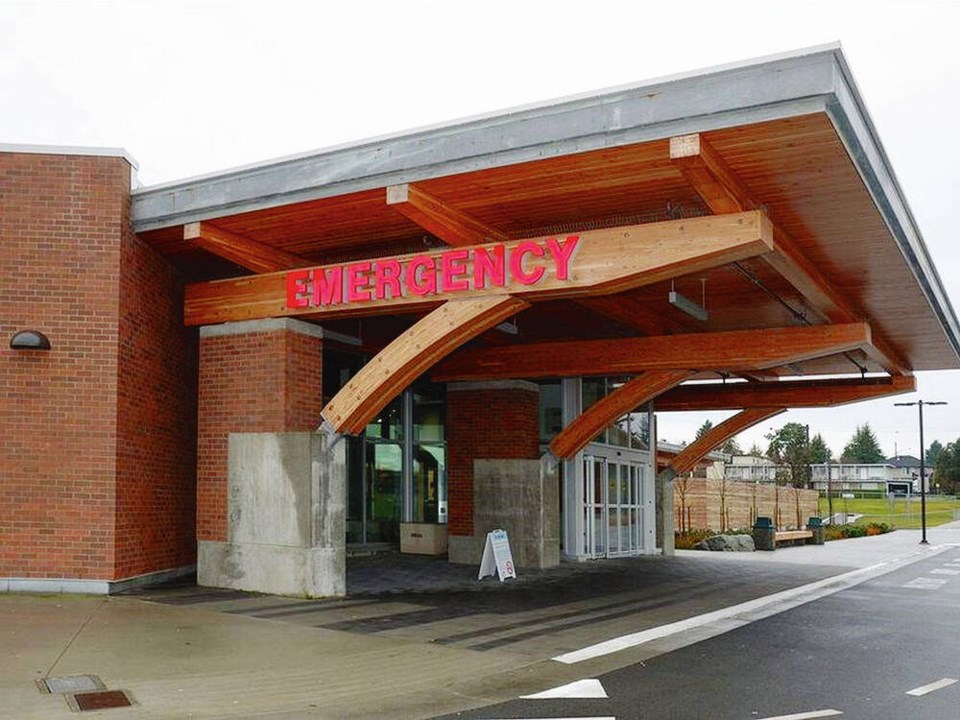NDP Leader David Eby promised at a town hall meeting in Nanaimo this week that if his party is re-elected, a new patient tower would be built at Nanaimo Regional Hospital.
Eby reiterated the promise during a campaign stop in Oak Bay on Friday, saying planning for the new tower would begin immediately if the NDP wins the election set for Oct. 19.
“The first piece is the funding for the business plans so that all of the work can be done with the nurses and doctors in the hospital to make sure that whatever is built is done so properly, and then take it to tender,” Eby said Friday.
“It’s a priority for me and a priority for the people of Nanaimo.”
Nanaimo Mayor Leonard Krog says he was “delighted” to hear the news, although he cautioned that major projects like this one so desperately needed in the central Island could take years.
“It’s a political promise and there is a great deal to be done before it actually happens,” Krog said Friday”
“I’ve spent some time in the legislature. I’d like to see the the time commitment, and I’d like to see the business plan.
“It’s a long process to build a hospital and a lot of work in the ministry. Just ask the good people of Cowichan Valley. It’s not like building a highway and laying blacktop. This is a hospital and that takes a major commitment.”
The B.C. Conservatives’ health-care plan does not include anything about hospital builds or expansions, but in a campaign stop Friday, leader John Rustad said his party would also support a new hospital tower in Nanaimo.
“People have been ignored long enough north of the Malahat,” said Rustad. “The new facility will go ahead under the Conservative government.”
B.C. Green Leader Sonia Fursteneau released a plan for mental health this week but hasn’t so far put forth a plan for overall health care.
Krog said Nanaimo is one of the five-fastest growing communities in Canada, and the Central Island has the oldest cumulative population in the country, which is driving demands for acute care.
Nanaimo Regional General, which is more than 60 years old, serves more than half the Island’s population of one million people north of the Malahat, and handles up to 400 patients a day in a building with a capacity for 346.
“It’s a dump — I’ve spent enough time there to know,” said Krog. “It’s extremely challenging for our health-care providers to deliver the healthcare and for the patients to receive it.”
Donna Hais, chair of the Fair Care Alliance, a coalition of medical, business, Indigenous and regional leaders advocating for better health care in the region, said candidates of the three main parties and independents running in the region all signed a pledge with Fair Care Alliance during a recent rally, but direct support also needs to come from the leaders.
The Fair Care Alliance has estimated the cost of a new patient tower would be nearly $2 billion. The province would be responsible for about 60% of the cost and the Regional District of Nanaimo for the remainder through taxation.
The regional district has committed to five capital planning priorities — a new patient tower, cancer centre, cardiac catheterization lab, high acuity unit and long-term care facility. For those projects to be feasible, the district hospital board is building reserves to reduce the reliance on debt and meet its partnership funding obligations.
The district said a tax levy of $45.11 per $100,000 of assessed property value in 2024 is needed for a contribution of $28.9 million into reserves. That represents a 28.2 per cent increase over the year prior, with 28.2 per cent planned for successive years.
Hais said the goal of Fair Care Alliance’s rally in Nanaimo this month was to bring attention to the investments “so desperately needed” at Nanaimo Regional Hospital.
“We formed this alliance because it creates a sense of community and what our community really needs,” she said. “This is not about politics … it’s creating awareness and the equity that’s needed to give access to the healthcare we need.”
The Fair Care Alliance said half the Island’s population is getting “one-fifth of the health resources on Vancouver Island,” citing differences between Nanaimo and Victoria’s two hospitals.
There is one on-call internist for more than 400 hospital patients in Nanaimo, two cardiologists compared to 23 in Victoria, and no oncologists compared with more than 30 in Greater Victoria, according to data from the alliance.
The central and north Island regions represent the largest population group in Canada without a catheterization lab, meaning patients with heart disease can’t always get timely access to care they need, it says.
The alliance also notes 80% of the Island’s First Nations are in the Nanaimo Regional Hospital’s catchment area.
In April, Independent Ladysmith-Oceanside candidate Adam Walker said Nanaimo Regional General Hospital was bursting at the seams.
He said at one point in March, 100 patients were in “hallways, corridors, broom closets, anywhere they can fit them … the chapel downstairs has patients in it.”
Walker said heart-attack victims were dying without the chance of getting to a catheterization lab in Victoria.
Eby said his government has already made significant investments in the Nanaimo region, including a new intensive-care unit, a new seniors facility in Lantzville and a $289-million cancer centre. Work on the latter is expected to start next year adjacent to Nanaimo Regional Hospital.



